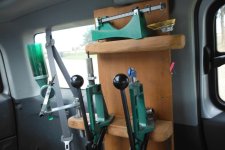Very early in the process of learning to reload and have a few questions about the brass I have that I would be grateful for guidance.
I have not yet purchased my reloading equipment and am just de-priming, cleaning, and measuring my brass.
I am shooting 223 loads and NOT 556 loads.
1. All brass is Sako 50gr brass that is one-fired in my Wylde chambered 223 20" 1:8 twist AR platform. Is my brass now fire formed to my chamber?
2. Brass measures 1.744-1.755 in length after one firing. Is this too short?
3. I have read brass stretches with repeat firings. If I pick 1.750 as a random cartridge length for trimming and reloading, is this ok?
Thanks beforehand for the time and help!!
terry
I have not yet purchased my reloading equipment and am just de-priming, cleaning, and measuring my brass.
I am shooting 223 loads and NOT 556 loads.
1. All brass is Sako 50gr brass that is one-fired in my Wylde chambered 223 20" 1:8 twist AR platform. Is my brass now fire formed to my chamber?
2. Brass measures 1.744-1.755 in length after one firing. Is this too short?
3. I have read brass stretches with repeat firings. If I pick 1.750 as a random cartridge length for trimming and reloading, is this ok?
Thanks beforehand for the time and help!!
terry

